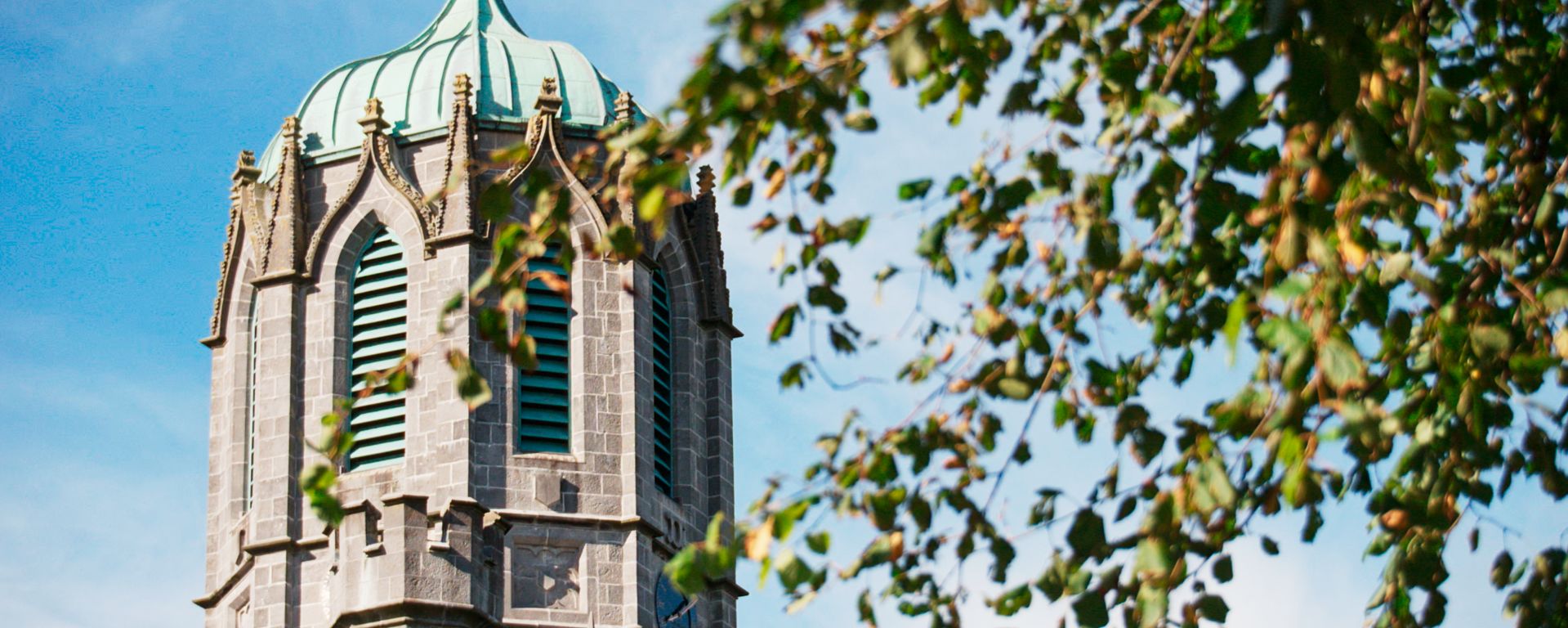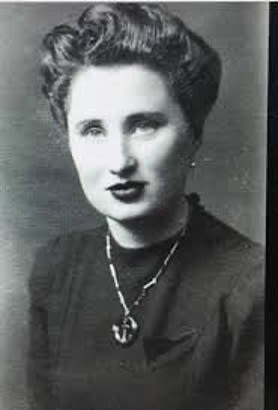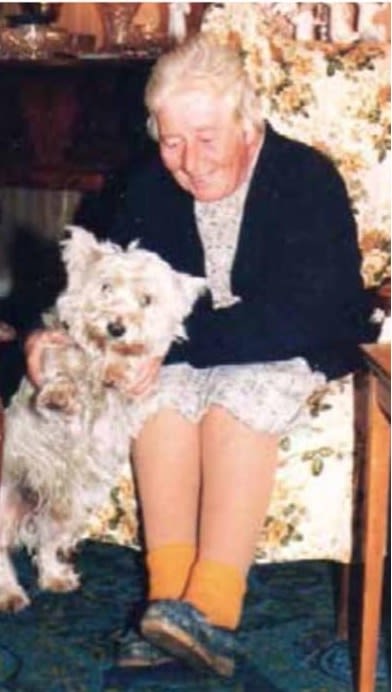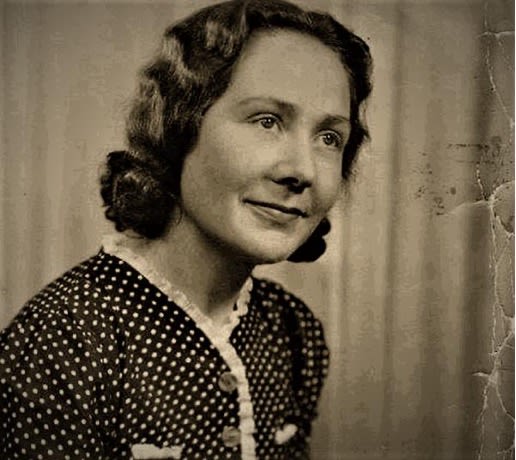
Celebrating International Women’s Day in Galway City


Our students recently took part in a walking tour where they heard about stories of some remarkable women associated with Galway City with experienced regional guide and member of Approved Tourist Guides of Ireland, Marteen Lane. Below Marteen gives an insight into some inspiring women and their affiliation with Galway City.
The field of women’s history dates to the 1960s and 1970s, although it could be argued that it can be traced further back to the 1920s and 1930s with the French Annales schools and the American school of New History, both of which advocated for a broader view of history. It has developed and expanded since the early 1970s, thanks to the work of Gerda Lerner, Joan Kelly, and Joan Scott. Early women historians wrote of the achievements of elite and notable women and the contributions women made to specific movements such as nationalism and labour, with the movement to the fore. Lerner coined these as “compensatory history” and “contribution history”, respectively. The writing of the achievements of elite and notable women and their contributions led to criticism for the omission of ordinary working-class and peasant women. It was argued that these historians did not tell the whole story of the female experience.
Historians, academics, employees of cultural institutions, and even men supportive of women’s history play an important role in promoting women’s history. Sharing women’s experiences and contributions shows that women’s history matters and is significant. In promoting women’s history, intersectionality needs to be to the fore. Intersectionality encompasses race, ethnicity, social class, and sexual orientation and is vital in giving a complete picture of women’s complex experiences.
In Ireland, the field of women’s history has evolved over the decades. Many gender history and women’s history experts such as Margaret Ward, Louise Ryan, Mary McAuliffe, and Linda Connolly have done much work to include women’s stories in the historical narrative. Organisations like the Women’s History Association of Ireland (WHAI) have also worked on writing women back into Irish history. The WHAI is an essential organisation in Ireland, bringing scholars from the field of women’s history and women’s studies together. Their project ‘The Bibliography of Irish Women’s History’ is a living document where publications of Irish gender history and women’s history are added regularly. It is an essential source for researchers of gender and women’s history.
Women’s history has always been a source of interest for me, particularly the stories of less well-known women. They’re the most extraordinary in my opinion. I began my women’s history walking tour in 2019 with the hope of sharing Galway women’s stories. Before conducting the research, I already knew of Lady Gregory and Nora Barnacle. I knew there had to be more women, especially women who are less well-known, but would there be enough information for a tour. Thankfully with a lot of digging and help from colleagues I found some amazing women. There’s a mixture of well-known women and not so well-known. With the less well-known women it’s important to me to share their stories to a wider audience and to give a complete picture of women’s experiences. With this article I am to do just that by sharing the stories of three women from my walking tour.
Una Taaffe was born into one of the last wealthy merchant class families of Galway. She lived with her parents and her four siblings above their drapery store on William’s Street. They were well-respected members of the Galway community and played an active role in the everyday life of the city. Una was regarded as one of the most beautiful women of the day, with great style and class. Photos of her youth portray an animated woman who enjoyed a vibrant social life.
A remarkable entrepreneur, Una developed her parents’ business into a successful woollen shop, sourcing hand knitted woollen jumpers from Connemara and the Aran Islands and exporting them to an international market through a busy postal order service. Una is remembered as a generous employer and someone who played an active role in the business community. As Una aged and new consumerism succeeded old ways of business, her social circle diminished, and to many, she appeared to become a ghost of her former self. Shops like Taaffe’s were left behind, and in many ways, so too was Una.
The considerable contribution that Una made to Galway as a business leader, and as a determined and confident woman is often overshadowed by the decline in her mental health in later years. This decline played out publicly and is often people’s lasting memory of her. And yet Una was a pragmatic woman who defied the social norms of her time. She took over the family business and ran it successfully for many years. She refused marriage, although she did marry a homeless man in the 1980s and was certainly not shy about speaking her mind.
She passed away in 2006 and in 2018 Elaine Mears captured the imagination of Galway with an invitation to the public to add their stories to the story of Una Taaffe. As a result, the play ‘Are You There Una?’ was developed as part of the Druid Theatre’s Company’s FUEL residency and Galway Theatre Festival. The play premiered in the Mick Lally Theatre in Galway city and at Áras Éanna on Inis Oirr in May 2019.

Úna Taaffe. Source: @storiesofuna Twitter
Úna Taaffe. Source: @storiesofuna Twitter
Lily McAllister was found on the streets of Cavan in 1929, aged nine years old, and was charged by Cavan District Court with ‘receiving alms’. As a result, she was sent to the Poor Clare’s St. Joseph’s Orphanage and Industrial School. She was recorded as ‘illegitimate’ with parents ‘unknown’.
When Lily was sixteen years old, she was discharged from St. Joseph’s and sent to work on one of the nun’s brother’s farms in Cavan. She was expected to work extremely hard, and she wasn’t treated very well. She ended up returning to the orphanage. The nuns didn’t know what to do with her as they didn’t keep children above sixteen, so they sent her to the Magdalen Laundry on Forster Street.
Lily was very outspoken and stubborn, so she didn’t take too well to all the rules and regulations. As punishment she spent time in the boiler room and had her head shaved. She spoke about how hungry the girls were that they ate the turnips straight from the kitchen garden.
In the late 1950s Lily and a friend of hers decided to escape. Her friend wanted to hop over the back wall, but Lily said, “we’ll go out the front door the way we came in” and that’s exactly what they did. They ran down to the docks and received shelter from Mrs. Kelly, who took pity on the two girls, as the Gardaí were out looking for them. Lily stayed with Mrs. Kelly for months before working in the Sacre Coeur hotel in Salthill, Merlin Park and later in the Convent of Mercy in Spiddal where she worked in the kitchen mainly serving nuns on their holidays.
Lily never recovered completely from her earlier life and unfortunately suffered from manic depression which was treated sporadically in Ballinasloe hospital with electric shock treatment and later became an outpatient at the psychiatric unit at the then Galway Regional Hospital now the University Hospital. She died from a heart attack on a weekend outing with the Salthill ‘Young at Heart’ club to Sligo in May 1989.

Lily McAllister. Source: Remember, Respect & Record
Lily McAllister. Source: Remember, Respect & Record
Kathleen Curran hailed from College Road in Galway city, a short stroll from the city’s docks where she spent much of her childhood. It’s therefore not surprising that when her education was completed in the Sisters of Mercy school, she was immediately employed by Galway Harbour Commissioners and began working as a clerk-typist in the resident engineer’s office in January 1938.
The following year saw the breakout of World War 2. In September, the day after the start of the war the S.S. Athenia was torpedoed by a German submarine off the coast of Scotland. This resulted in the loss of more than a hundred civilian passengers and crew. It was the first British ship sunk by German forces during the war and the incident prompted immediate outrage. The liner was carrying over a thousand passengers and the survivors were rescued by passing ships and brought to nearby ports.
As well as her usual office duties Kathleen volunteered with the life-boat services and the event with the S.S. Athenia so early on in her career no doubt influenced her desire to be of assistance to ships in need. Having excellent seamanship skills, she occasionally took the help of the pilot boat, guiding ships into Galway Harbour.
But the repatriation of the poet W.B. Yeats’s remains through Galway Harbour on board the Irish Navy ship, the L.E. Macha in 1948 was certainly a proud day for Kathleen. Yeats died in the south of France in January 1939 and was quickly buried at Roquebrune. He was to be reburied the following year in his beloved Co. Sligo as per his wishes. However, repatriation was made impossible due to World War 2. Once his coffin had landed in Galway it was taken on a procession around the city’s streets, which were lined with people to pay their respects; the cortege continued to Drumcliffe, Co. Sligo where he was laid to rest.
In 1951 the offices of the Port Authority Secretary of the Galway Harbour Board and Harbour Master were being amalgamated and the board decided unanimously to appoint Kathleen to the position of harbour master temporarily. As part of her role, she oversaw the birthing accommodation for ships and attended to the needs of the ships’ masters. Kathleen remained in her role as acting harbour master until 1953 when a suitable male candidate took her place in a permanent capacity.
But even after her apparent demotion, Kathleen’s expertise was valued by all working at the docks and no important decisions were made without her approval; she continued to be intimately involved in all the major happenings witnessed by Galway Harbour. In 1979 the Connacht Sentinal newspaper claimed that between 1951 and 1953 Kathleen may have been the only lady harbour master in the whole world. She was most certainly Ireland’s first female harbour master, albeit temporarily.
Kathleen remained in the employment of the Galway Harbour Commissioners until the late 1970s. After 40 years of service a presentation was made to Kathleen by Galway Harbour Board. During the ceremony the chairperson at the time, Mr. Fuller declared that Kathleen was the most dedicated and efficient officer of the Board.

Kathleen Curran. Source: Galway Advertiser
Kathleen Curran. Source: Galway Advertiser
If you want to hear more stories, come on my HerGalway Walking Tour, details are on my social media accounts @marteenlane.
Sources
Casserly, Maeve and Ciaran O’ Neill. ‘Public History, Invisibility, and Women in the Republic of Ireland.’ The Public Historian, vol. 39, no.2, 2017: pp. 10-30.
Huyck, Heather. Doing Women’s History in Public: A Handbook for Interpretation at Museums and Historic Sites. London: Rowman & Littlefield, 2020.
Kenny, Tom. ‘Taaffe’s of William Street’ Galway Advertiser. 4 August 2021. https://www.advertiser.ie/galway/article/123495/taaffes-of-william-street. Accessed 1 October 2021.
Lerner, Gerda. ‘The Majority Finds Its Past.’ Current History, vol. 70, no. 416, WOMEN IN AMERICA, 1976: pp. 193-196, 231.
McNamara, Denise. ‘Gone but not forgotten – Una’s life to become a play’ Connacht Tribune. 19 January 2018. https://connachttribune.ie/gone-not-forgotten-unas-life-become-play. Accessed 1 December 2018.
Murphy, Cliona. ‘Women’s History, Feminist History, or Gender History?’ The Irish Review (Cork), no. 12, Spring-Summer, 1992: pp. 21-26.
O’ Gorman, Ronnie. ‘Dealing with whatever the ocean sends’ Galway Advertiser. 21 June 2018. https://www.advertiser.ie/Galway/article/101431/dealing-with-whatever-the-ocean-sends. Accessed 1 December 2018.
— ‘The poet and his legend returns’ Galway Advertiser. 14 June 2018. https://www.advertiser.ie/Galway/article/101271/the-poet-and-his-legend-returns-home. Accessed 1 December 2018.
Tierney, John (Ed.). Remember, Respect & Record. Cope Galway. 2018. Web. https://www.copegalway.ie/wp-content/uploads/2019/04/Magdalen-Women-of-Galway-BookletEd2.pdf. Accessed 1 December 2018.
Women’s History Association of Ireland. ‘The Bibliography of Irish Women’s History.’ Women’s History Association of Ireland. No date. Web. https://womenshistoryassociation.com/the-bibliography-of-irish-womens-history/. Accessed 5 May 2022.

